So Many Cameras – So Little Time
Cameras, Cameras, everywhere. Sometimes I feel like we get so caught up in “the now” with the digital age and the boom of the dSLR, that many of us probably forget about all the other cameras out there. I've been doing a lot of wandering around on eBay lately (which has already caused me to buy four new cameras) and it's quite apparent that there are a ton of cameras out there that don't fall into the dSLR classification.
So this is just kind of a fun little post that takes a look at each of the main types of cameras still in use today. Enjoy!
SINGLE LENS REFLEX
The SLR camera is a fairly common sight these days, with digital versions covering every price range from affordable to outrageous. These cameras derive their name from how they're made and how they work. Single Lens indicates that the camera uses one lens for viewing and recording photos. A series of mirrors and/or prisms direct the light from the camera lens to the viewfinder. The first mirror in the set is called the Reflex mirror, which sits in front of the recording media (film or sensor) and flips up when the shutter is released. Single Lens Reflex cameras typically have removable lenses and offer an array of features and controls — But this doesn't always have to be the case. SLRs can be found in digital and analog (film) versions.
TWIN LENS REFLEX
TLR cameras are mainly a thing of the past, especially with the introduction of the SLR. These cameras have a distinct look due to their Twin Lens system. One lens is used for viewing while the other is used for recording the image to the media. The image from the upper lens is reflected onto a viewing/focusing screen with the Reflex mirror. Twin Lens Reflex Cameras (despite their clunky and old fashioned appearance) actually hold several advantages over the SLR. Simpler construction, fewer moving parts, more responsive shutter mechanisms, and sturdy build are just a few things these cameras are known for. Of course, bulkiness, sometimes awkward operation, and the tendency to have fixed lenses are a few things that the standard SLR took care of. Oh yeah, and they're film cameras (and usually medium format)… at least, I've never seen a true digital TLR.
POINT & SHOOT
The Point & Shoot, or compact camera, is another type of camera that has flourished in the digital age. These little packages are easy to carry around and equally easy to operate. Though the features and controls are limited on many models, the intended use for this camera is not professional work. Most P&S cameras are autofocus and auto meter, allowing the user to focus on the subject. Point & Shoot cameras can be found in both film and digital versions. Most of the old film versions are of the viewfinder type, while many digital compact cameras don't even have a viewfinder (instead they rely on their LCD screen).
RANGEFINDER
While the rangefinder camera has similar characteristics to both SLR cameras and compact cameras, it's a different beast altogether. These cameras derive their name from the mechanism found in the viewfinder: the rangefinder. A rangefinder is a tool that allows you to judge distance and focus without actually looking through the lens. The major benefit of these cameras lies in their simplicity. They're small, lightweight, and they contain fewer moving parts than the SLR. UPDATE: As Janne pointed out in the comments, this isn't entirely true. The actual rangefinder mechanism is much more complex than an SLR camera. Thanks Janne! Rangefinders are famous for street photography, and you'll find that many famous street photographers use (or did use) rangefinders. These cameras can be found in both film and digital versions, but watch out for those price tags! Some of these cameras (even the film cameras) cost more than professional level digital SLRs — but there are plenty of cheaper options out there… Just don't start daydreaming about a Leica.
VIEWFINDER
Viewfinder cameras are very similar to rangefinder cameras, but they're missing one important element: the actual rangefinder mechanism. The viewfinder on these cameras only presents the photographer with a view of the approximate framing in order to allow for composition. Focusing is either something you guess at, or something that doesn't happen (fixed focus). Light metering is typically non existent also, but I have seen some cameras with meters external to the viewfinder, and others with a meter that attaches to the camera. These cameras are incredibly simple, and one of the most well known viewfinders is the Holga, but there are plenty of other cameras out there that are made of metal. Viewfinders can be found in both film and digital versions, but film is more common than digital. The reason being, is that any viewfinder with an autofocus mechanism is actually considered to be a point & shoot.
BOX CAMERA
Box cameras are old, and you see even fewer of them than TLRs. The camera gets its name from the fact that it's actually a box with a lens. The lens is typically a miniscus lens with just a single element. They're usually fixed focus, fixed lens, non-metered, fixed aperture, fixed shutter speed, fixed everything. Like I said, it's a simple camera — it's basically a souped up pinhole camera. These old film cameras could be fun to toy around with, but don't expect to shoot a professional gig with one. The most famous of these cameras is the Kodak Brownie.
FOLDING CAMERA
Another blast from the past is the folding camera. These cameras look like something of a cross between the view camera and a rangefinder. The camera actually folds up since it uses a bellows to extend the lens, and everything folds into a nice rugged little case. A majority of these cameras use medium format film, but there are a few 35mm versions out there. These cameras were popular during the early 1900's, and were probably phased out due to the introduction of high quality viewfinders and rangefinders.
SUBMINIATURE
Subminiature cameras are somewhat of a gray area, but basically anything that creates images smaller than the standard 135 format (24mm x 36mm) could be considered subminiature. These cameras take film formats such as Minox, 16mm, Super 16, 110 format, and a few others. While the cameras are still floating around out there, the films are getting harder to find (as I just found out since I bought a 110 format camera).
VIEW CAMERA
The granddaddy of all cameras… the view camera. While not the oldest type of camera, it is one of the oldest types that's still used today. A bellows separates the lens and the film plane, and the distance and angles between the two can be adjusted. Large format cameras use the view camera setup, and many modern versions are still used today for professional needs. If you think digital photography is an expensive hobby, just do some research on these puppies and the film that goes inside them.
PINHOLE
OK, so this really is the simplest of all cameras. The pinhole camera can be nothing more than a bunch of folded up cardboard and a piece of film. No lens, no shutter, no aperture, no need to focus, no nothing. This is something I'd like to try out eventually, but I get the impression that it's a hobby for the patient soul (ie, don't expect to go shoot some action photography with one of these). Although native to film, pinholes have made their way into the digital realm with things such as pinhole lens caps. And if you insist that your images must be tack sharp, don't even think about trying pinhole.
AND MORE
I'm sure there are lots of odd little cameras out there from past and present — we've really just covered the basic cameras still in use today. I'd encourage you all to try out different types of cameras if given the chance. Heck, maybe even buy some of your own. But no matter what kind of camera you're using, just remember that you're still a photographer and you're still creating a photo — the camera is just a tool.
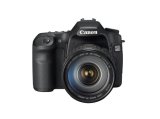

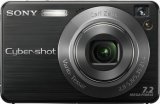
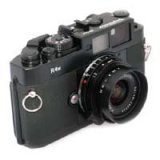
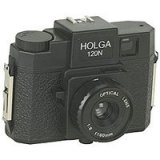
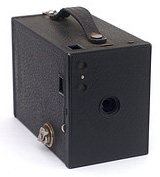
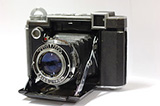

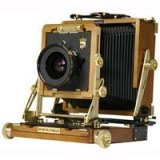

Trevor Carpenter
May 29, 2008Nice post, Brian.
I just ordered my first TLR, a Seagull. It’s a 120, medium format, and I’m real excited to play with it.
Brian Auer
May 29, 2008That’s awesome Trevor! I just ordered one too — I went with a Minolta though. Next time we’re both at the same photowalk, we should bring our TLR cameras and really give people something to look at!
Antoine Khater
May 29, 2008lol when I think I was proud to know what DSLR means 🙂
Janne
May 29, 2008Just one correction: the rangefinder is actually mechanically and optically more complex and demanding than the SLR, which is why they tended to cost a lot more. The rangefinder optomechanics need to be very precise to actually measure distance correct, and the lens mechanics need to be similarly precise to actually focus where you tell it to. Unlike an SLR, it’s completely open-loop so you can’t compensate for any optical or mechanical slop.
Mike
May 29, 2008In my 8th (9th?) grade photography class the first thing we did was a pinhole camera in B&W. It was nothing more than an Oatmeal can (yes, the round Quaker Oats one), with a copper sheet with the pinhole in it and electrical tape covering the hole. In the dark room we put the B&W “film” opposite the pinhole. Out we went and “took a picture”. Then back into the darkroom to process our prints. They came out as inverted negatives, which we then put it face to face with an unprocessed sheet and exposed it to light from the enlarger. This gave us our final B&W print.
Cool for junior high!
Lisa
May 30, 2008Can’t help but keep dreaming about a Leica. Wish I didn’t. Great article, Brian.
Mustanir
May 30, 2008Glad to see you used a Seagull as an example TLR and not the Rollei off which it was based or the Mamiya which is probably the cream of TLRs. I love Seagull 🙂
Lately I’ve been thinking that a 35mm folding camera (with rangefinder) would make the perfect pocket camera, provided it had an adequately bright lens.
Also, it appears that the humble mobile phone camera is missing from your list.. 😛
Marko
May 30, 2008Great article to read and to refresh memory!
the_wolf_brigade
May 30, 2008A few more additional points 😀
Rollei makes a digital TLR https://www.rollei.jp/e/pd/MiniDigiAF.html
Some of the folding cameras work on a rangefinder principle (coupled rangefinder), while others work on a viewfinder basis. The Kodak Retinette is probably the most famous 35mm folder. These folders, especially in the 120 format, make for a great alternative to the popular Holga as they offer sharper lenses and more control as well as slipping easily into a pocket.
There is also the field camera in the view camera category. As far as I understand, this is a more “portable” version of the view camera, with slightly less available movements. It’s an area I want to move into, but I haven’t had time to get the information together.
You bought a 110? Film is available on ebay. It seems to be implied that there are still some Chinese companies making it, with The Lomography Society having recently released an overpriced version.
Great post!
Brian Auer
May 30, 2008Thanks for the add-ons! I saw that digital TLR too, but I think it’s more of a novelty P&S than anything (though I could be wrong – I’ve never used one).
I totally bought a 110, just came in the mail yesterday and everything seems to be functioning. I was hoping my photography store would carry the film, but they said they stopped carrying 110 a few months ago. Off to eBay and Amazon I suppose! That’s where I picked up 60 shots of Polaroid Spectra a few days ago.
By the way, I just got my Minolta Autocord TLR in the mail and everything seems to be working. I should be able to run through a few rolls this weekend and have some stuff up on Flickr next week! I’m so stoked!
the_wolf_brigade
May 30, 2008More roid goodness – sweet!
Thanks to you I’m bidding on another rangefinder 😀
Oh, and I just got 19 rolls of Polachrome and a processing unit. Yay for instant slide! (Figured since we’re sharing the film love…pics on my stream).
Mattias Wirf
June 1, 2008One nice thing with buying old SLR-camera and such is that its so easy to adjust the lenses to new Canon DSLRs. My favorite lens at the moment is the Helios 44-3 made in Minsk in the 80’s. Mounted on my Canon EOS 350D its a great lens, better then my EF-lenses. And for the Helios i payed about 20$ including a Zenit 35mm-SLR!
Anf the foldingcameras are soooo nice-looking!
Brian Auer
June 1, 2008Sounds like you got a smokin’ deal on that camera/lens combo!
Richard Wong
June 5, 2008One of the reasons why the Leica is so popular for street photographers is because it looks like a toy camera and is thus more inconspicuous. A 1DSMKIII screams professional photographer, which is counter-productive from what a street photographer wants.
I’ve wanting to try one for a while out of curiosity.
the_wolf_brigade
June 5, 2008@Richard Wong
I’m not sure that the reason Leica is popular as a street camera is because of it’s resemblance to toy cameras (although it’s resurgence could be attributed to that). Toy cameras have really only gained their popularity in the last few years, while the Leica has been around since about the ’30s.
The Leica gained it’s popularity from it’s use by Henri Cartier Bresson, who was originally ridiculed for using such a small camera. But, his ability to capture moments before other people had even realised what had happened help cement the Leica’s status, as well as the (now) almost mythical “decisive moment”.
A rangefinder in general is a popular choice for street work as the leaf shutters available in most models, (I understand that some Soviet built rangefinders have focal plane shutters), are extremely quiet helping the photographer to remain inconspicuous as you point out.
Personally I’ve used a Pentax 6×7 for street shooting, which is probably similar in size to the 1D, and most likely even more noisy. While it is effective in capturing people in moments of surprise, it is hard to go unnoticed 😀
I would highly recommend trying out a rangefinder if you can – it is a unique experience standing behind/next to someone on the street and getting a shot off before they even realise you’re holding a camera. While this cane be done with various other types of cameras, the quietness of a leaf shutter can’t be beat.
Brian Auer
June 20, 2008Hasselblads are medium format SLR cameras. You look through the same lens that takes the photo. Some have typical viewfinders that you put your eye up to, while others have waist-level viewfinders with ground glass.
chudez
June 19, 2008just curious … where does the hassleblad fit in?
Richard Wong
June 20, 2008And Cartier-Bresson liked the Leica’s because he could sneak his photos. That was his style. He would do things like hide his camera behind a hankerchief so he wouldn’t have to interact with his subjects.
the_wolf_brigade
June 20, 2008^^ Yes! I read that because of him capturing the moment so many times before others had even setup, he changed the face of press photography.
the_wolf_brigade
June 23, 2008Just realised you forgot the APS format. A few other formats well, but they generally fit into other categories, such as 127 fits into box camera section etc.
APS *may* fit in to the compact/point and shoot section? I have one in the post – should be here tomorrow.